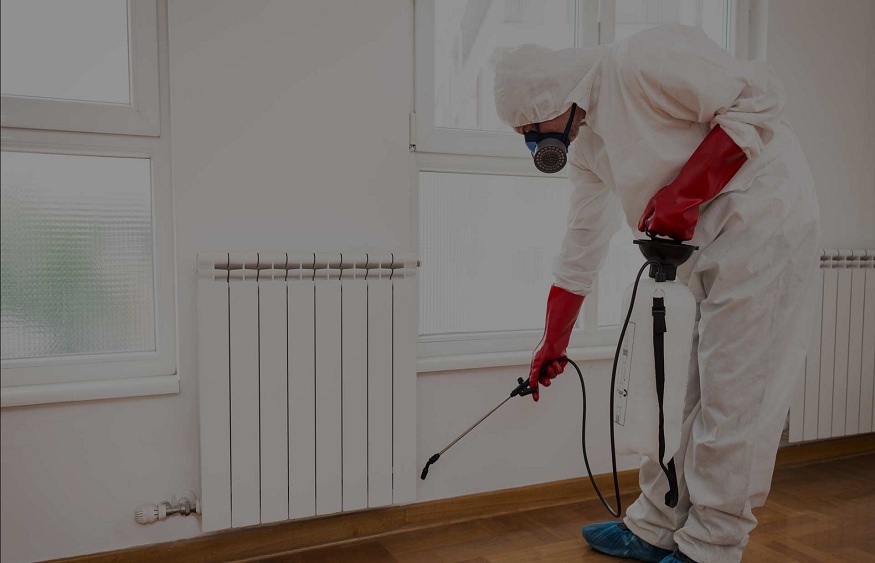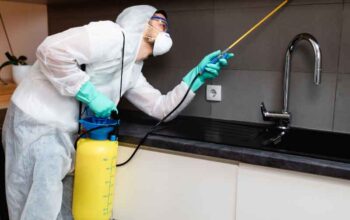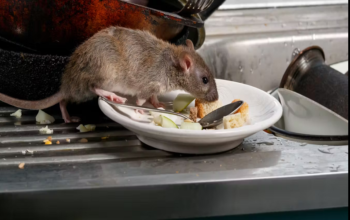Welcome to our blog post on eco-friendly pest management solutions! If you’re tired of battling pesky insects and rodents with harmful chemicals that harm the environment, then you’ve come to the right place. In this article, we’ll explore some effective and sustainable methods for keeping pests at bay without compromising the health of your family or the planet. From physical barriers to natural repellents, we’ve got you covered with safe and environmentally friendly alternatives that you can try today. So, let’s dive in and discover how you can protect your home from unwanted invaders while staying true to your commitment to sustainability!
Eco-Friendly Pest Management Solutions
Eco-friendly pest management solutions focus on minimizing harm to the environment and human health while effectively managing pests. Here are some effective and sustainable options to consider:
Physical Barriers
Physical barriers are a prime example of Eco-friendly pest management solutions. By physically blocking pests from entering your home or garden, you eliminate the need for harmful chemicals or pesticides.
One way to create a physical barrier is by sealing up any cracks or openings in your walls, doors, and windows. This prevents pests like ants, spiders, and even rodents from sneaking inside. Another option is using mesh screens on doors and windows to keep out flying insects while still allowing fresh air to flow through. These simple yet practical measures can go a long way in preventing pest infestations without causing harm to the environment.
Natural Repellents
When it comes to keeping pests at bay, natural repellents can be an effective and eco-friendly solution. These substances work by emitting odors or tastes that bugs find unappealing, causing them to steer clear of your home or garden.
One popular natural repellent is peppermint oil. Its powerful scent not only deters insects like ants, spiders, and mosquitoes but also leaves a refreshing aroma in the air. Another option is vinegar, which acts as a deterrent for common household pests such as flies and fruit flies. Simply mix equal parts water and vinegar in a spray bottle and apply it to areas where these pests are commonly found.
Remember that different pests may respond differently to various natural repellents, so you may need to experiment with different options to find what works best for you. By utilizing these eco-friendly alternatives, you can keep unwanted visitors at bay without resorting to harmful chemicals or pesticides!
Biological Controls
Biological controls offer a natural and eco-friendly way to manage pest problems. Instead of relying on chemicals or toxins, these methods harness the power of nature to keep pests in check. One common biological control technique is introducing predatory insects or animals that feed on specific pests. For example, ladybugs are known for their appetite for aphids, while certain species of nematodes can help control soil-dwelling pests like grubs and maggots. By encouraging these beneficial organisms into your garden or home, you can create a balanced ecosystem where pest populations are naturally controlled.
Another effective biological control method is using microbial insecticides. These products contain bacteria or fungi that specifically target and kill certain pests without harming beneficial insects, humans, or the environment. For instance, Bacillus thuringiensis (Bt) is commonly used as a natural pesticide to combat caterpillars and mosquito larvae. The beauty of biological controls lies in their ability to provide long-term solutions by disrupting pest life cycles rather than offering temporary relief with potentially harmful chemicals.
Neem Oil
Neem oil is a powerful natural solution for pest management that has been used for centuries. Derived from the seeds of the neem tree, this oil contains compounds that repel and disrupt the life cycle of many common pests. It is safe to use around children and pets, making it an eco-friendly alternative to chemical pesticides.
To use neem oil as a pest control method, simply dilute it with water according to the instructions on the bottle. Then, spray it directly onto plants or surfaces where pests are present. The strong odor acts as a deterrent, while the active ingredients prevent insects from feeding and laying eggs. Neem oil can be particularly effective against aphids, whiteflies, mealybugs, and spider mites.
Diatomaceous earth
Diatomaceous earth is another effective and eco-friendly solution for pest management. Diatomaceous earth is a fine powder made from the fossilized remains of diatoms, which are tiny aquatic organisms. The sharp edges of diatomaceous earth particles can pierce through the exoskeletons of pests like ants, bed bugs, and fleas, causing them to dehydrate and eventually die.
To use diatomaceous earth as a pest control method, simply sprinkle it in areas where you have noticed pest activity or along their entry points. Make sure to wear gloves and a mask while handling diatomaceous earth to avoid any potential respiratory irritation.
Remember that while diatomaceous earth is safe for humans and pets when used correctly, it can be harmful if ingested in large amounts. So always follow the instructions on the product label carefully.




